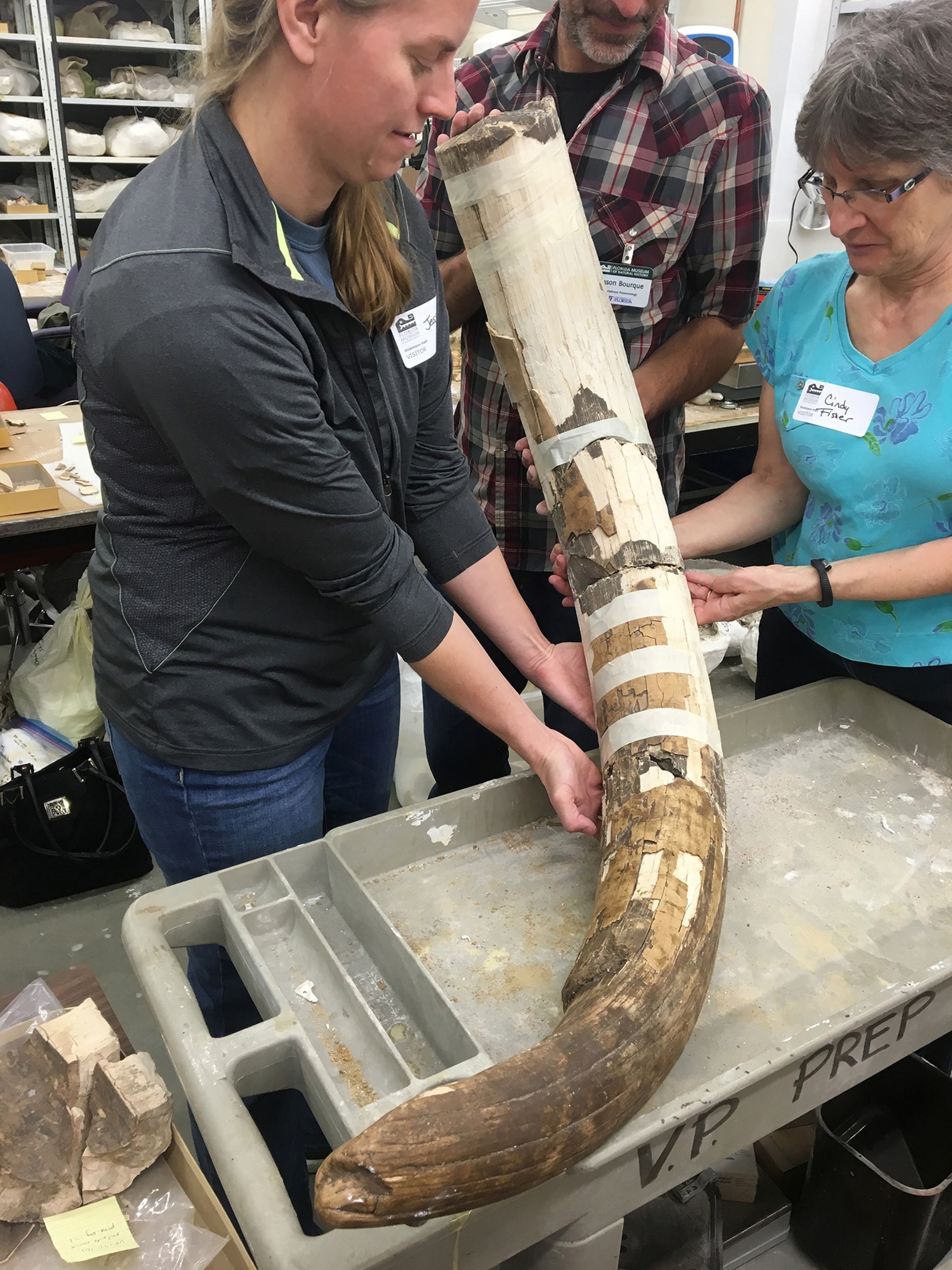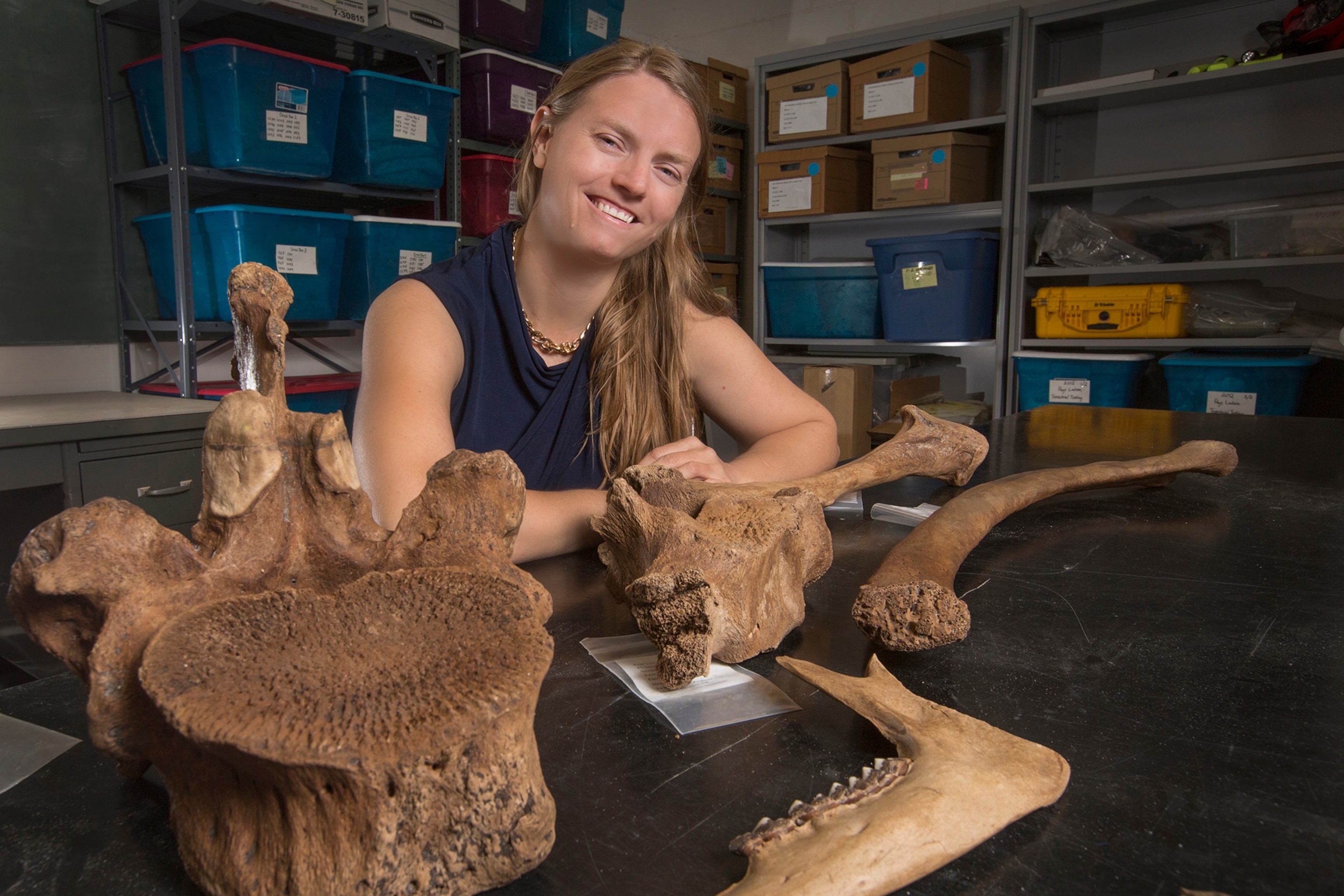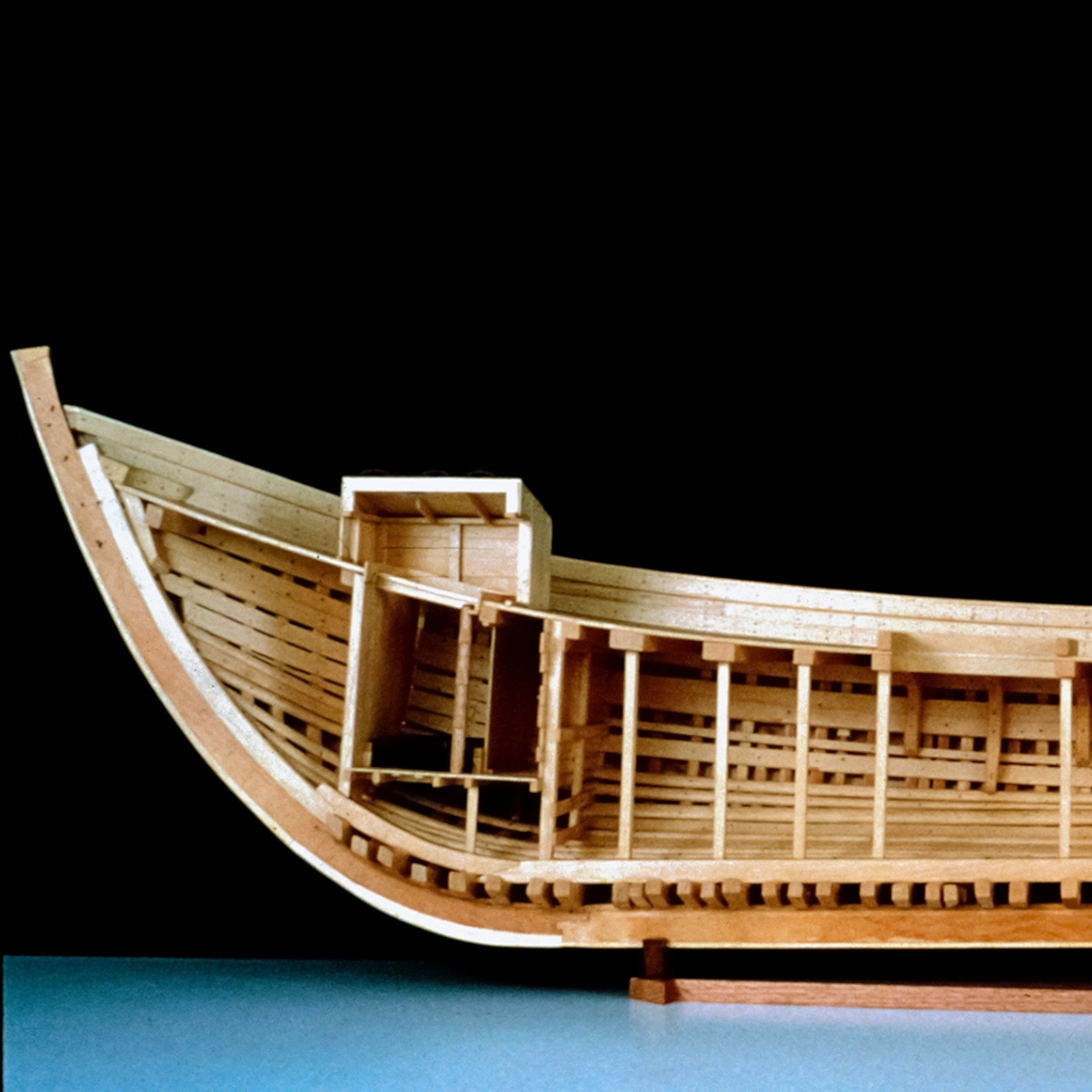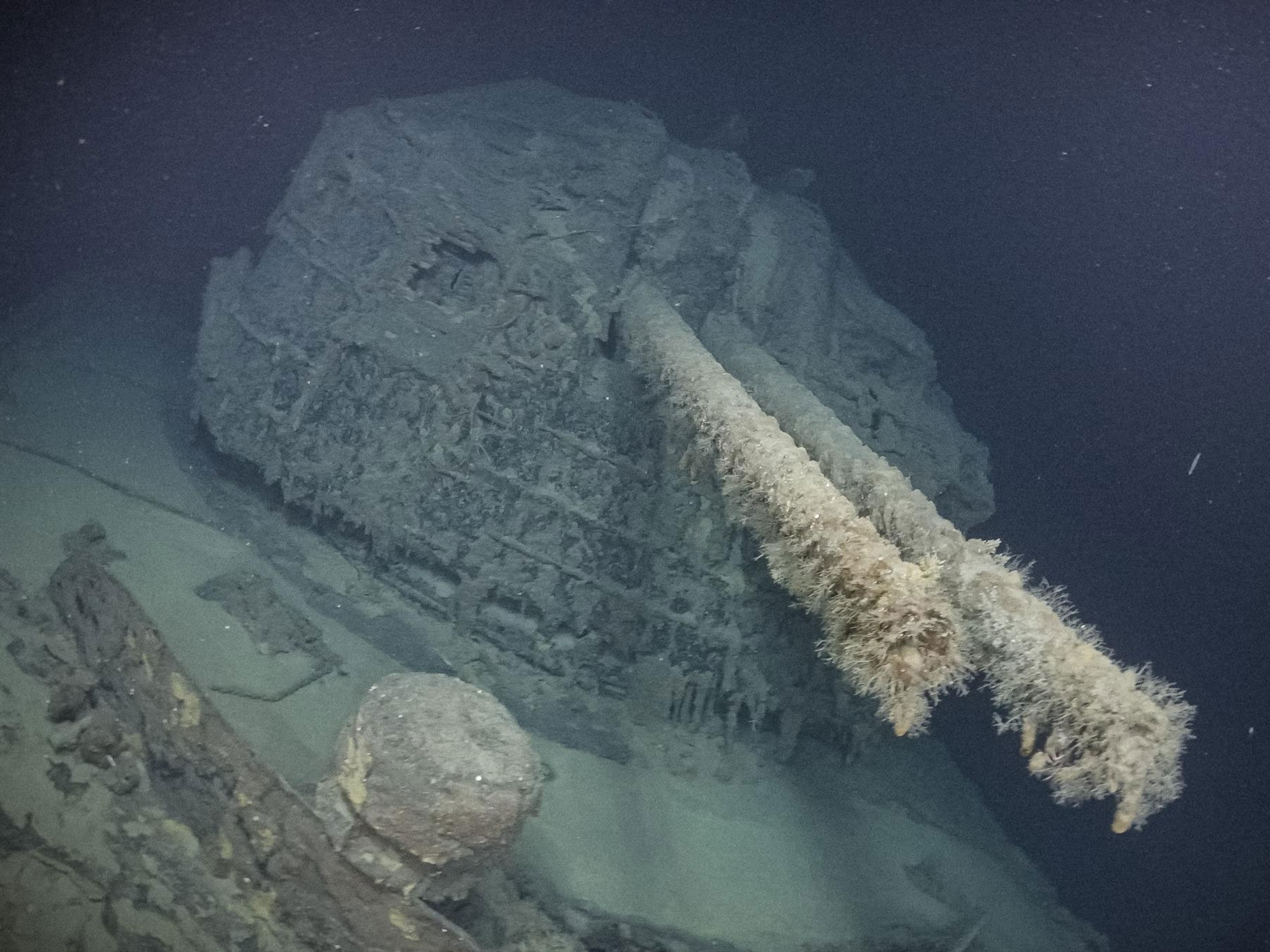
Discovery Points to Earlier Arrival of First Americans
A sinkhole in Florida’s Aucilla River is an “archaeological gold mine” that offers a rare glimpse of life in ancient America.
A thousand years before big game hunters who used what are known as Clovis spearpoints spread across North America, earlier arrivals were living near Florida’s Aucilla River alongside mastodon and other animals now long extinct. So say archaeologists who spent four years investigating an underwater sinkhole known as the Page-Ladson site, located in northern Florida east of Tallahassee.
A “bifacial” stone knife—one with a blade chipped to sharpness on both edges—and other stone artifacts found in riverbed sediment dated to 14,550 years ago provide “unequivocal” evidence of human habitation, says one of the principal investigators, Michael Waters of Texas A&M University. The researchers’ findings were reported Friday in the journal Science Advances.

Until recent years, the finding would have been controversial as a matter of course. Most anthropologists believed that the first Americans were big game hunters who arrived around 13,000 years ago and left distinctive stone weapons—called Clovis points after the New Mexico town where the first examples were found. But the Page-Ladson site now joins a short but growing list of ancient places with strong evidence of pre-Clovis habitation, including sites in Chile, Wisconsin, Oregon, and Texas.
The lead author of the study, Jessi Halligan of Florida State University, says prior research at Page-Ladson by other archaeologists had produced evidence of pre-Clovis habitation, but not “smoking gun artifacts.”
(Related: Clovis People Not First Americans, Study Shows)
“Most archaeologists just pretended that the site didn’t exist, because they couldn’t assess materials from the underwater context,” but that won’t be the case this time, Halligan said. Her team excavated and radiocarbon-dated the river’s sediment layers with meticulous care, and the chert knife and flakes are clearly human artifacts. “There’s no way that bifacial knife was not made by people.”
"Like Diving in Iced Tea"
Riverbeds are notoriously difficult to excavate, but the Aucilla River is unusual. Wending through the limestone karst of northern Florida, the river disappears underground for long stretches, keeping the current slow and sediment layers relatively undisturbed.
“It’s a ‘blackwater’ river,” stained with tannins from vegetation, Halligan says. “It’s literally like diving in iced tea.” But with scuba equipment, bright lights, extra patience, and nerve, archaeologists are able to excavate the thick layers of sediment much as they would on land—albeit with pumps and hoses to extract the sediment they remove.
The excavation site is located in a 30-foot-deep sinkhole in a part of the Aucilla River known as Half-Mile Run, a long stretch where the river flows aboveground. But back in the late Pleistocene, when sea levels were some 300 feet lower and Florida was significantly drier, the sinkhole wasn’t at the bottom of a river. It was the site of a spring-fed pond that served as an important water source for animals and people.

The remains of now extinct animals—including the bones of prehistoric camelid, bison, and mastodon—were discovered in layers associated with the pre-Clovis human artifacts. And a mastodon tusk that was discovered by David Webb and John Dunbar in the earlier excavations shows clear signs of human contact, according to a new analysis by David Fisher, an expert on mammoth and mastodon remains. (It’s unknown whether the humans killed the animal or scavenged its remains, but Waters says the site would have been a perfect place for humans to ambush prey.)
Dung Fungus Offers Important Clue
Another key finding comes from an analysis of sporormiella, a fungus whose lifecycle depends on being consumed and then excreted by large herbivores like mammoth and mastodon. Sporormiella disappear from the sediment record at Page-Ladson around 12,600 years ago, the same time that large Ice Age animals went extinct elsewhere on the continent. “We had pretty good dates for extinctions in the Southwest, the Northwest, and the East, but no firm numbers on when they went extinct in the Southeast,” Waters says. Archaeologists had speculated that the Southeast might have been a “refugia” where those animals may have gone extinct later, but based on the sporormiella data, that appears not to be the case.
“The major cause for extinction was probably environmental—a warming climate—but for at least 2,000 years before the extinctions, humans were on the scene utilizing the animals,” he says. Whether humans played a significant role in the extinctions remains an open question.
James Adovasio, the lead excavator of the Meadowcroft Rockshelter in Pennsylvania, one of the first pre-Clovis sites to be discovered in North America, says the Page-Ladson site is a potential window not just into how early people got to the Americas, but how they lived on the land once they arrived. They weren’t just hunting mammoth with spears, and they didn’t come from Asia in a single wave.
The peopling of the Americas “was multipronged, stretching over a substantial period of time, involving different migrant groups and entry routes, and diverse ways of life,” Adovasio says. “Florida is about as far from the Bering Strait as you can get in North America. If you’ve got people in Florida 14,500 years ago, at the same time they are in so many parts of the Americas, the simplistic notion of a colonization by rapidly moving, late-arriving population is simply false.”
Waters, who trained under an archaeologist who has long been skeptical of pre-Clovis claims, says the Page-Ladson site answers all the objections of potential critics and presents the strongest case for pre-Clovis inhabitation of all the known North American sites.
“We have clear artifacts, they were excavated meticulously, and they were in place,” Waters says. “They were in a solid geological context, covered by four meters of sediment, and covered by a shell layer that sealed the complete deposit, and itself dated to 14,400 years ago. We have 71 radiocarbon dates throughout the entire sequence. If people don’t believe this site, they’re not going to believe anything.”
Michael Faught, an archaeologist with extensive underwater experience who was one of the reviewers of the Science Advances paper, seconds Waters’s assessment of the research. “I don’t know what else to tell you,” he says. “It’s unassailable.”
Because so many potential sites of early human habitation are now submerged, Halligan and Waters say the next step is to look for more underwater sites. Page-Ladson was discovered by accident, when a former Navy SEAL named Buddy Page found prehistoric elephant bones while exploring the Aucilla River by scuba in the early 1980s. Future discoveries may depend on more concerted efforts.
For her part, Halligan, who is one of the few archaeologists in the country with expertise in underwater excavation, plans to systematically explore more of the Aucilla River Basin and identify potential sites with ancient sediment layers.
“I hope this study is a shot in the arm for prehistoric underwater research,” Waters says. “Shipwrecks are easy to find. But finding these underwater prehistoric sites is going to be difficult.”







